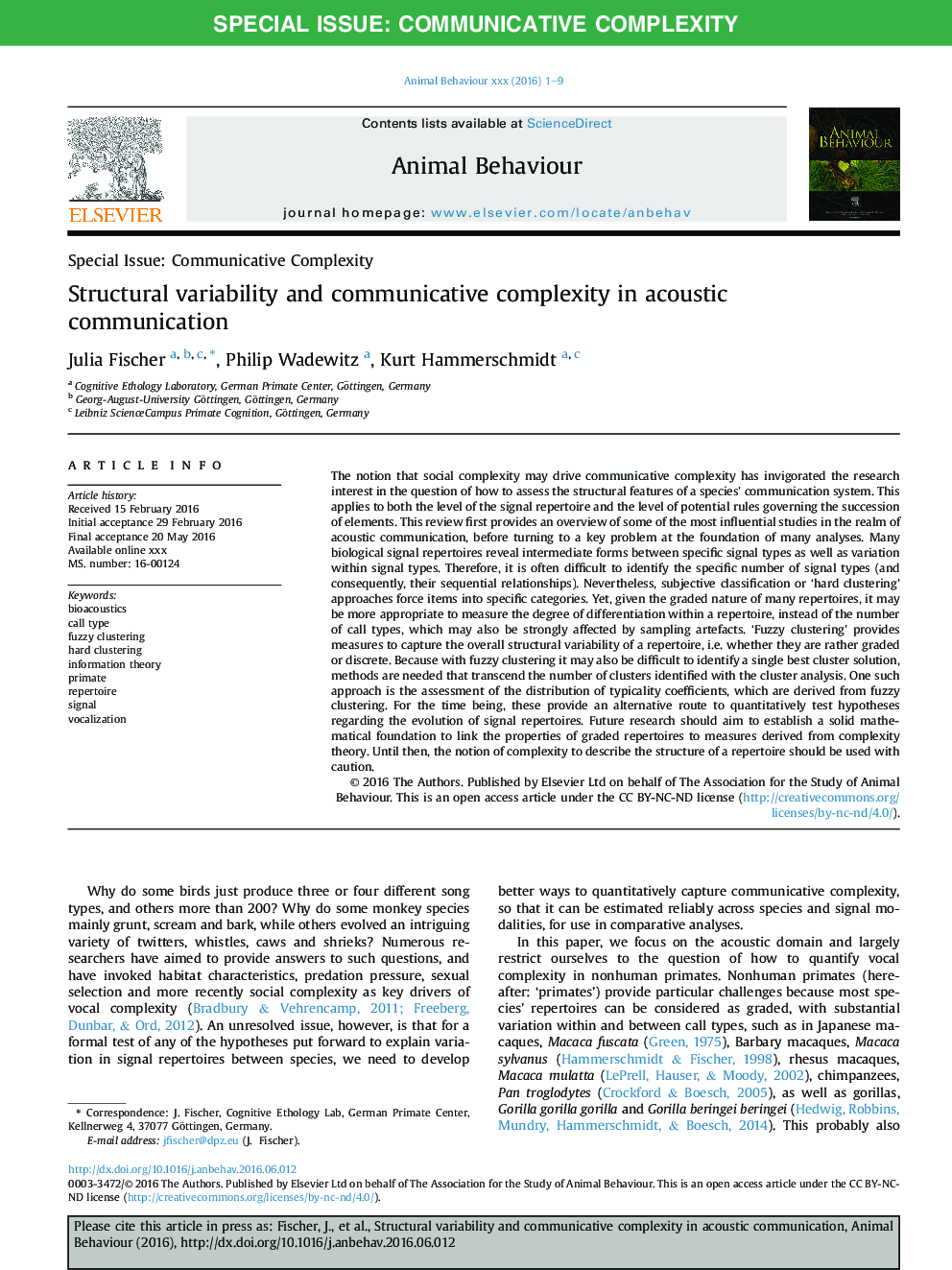| Article ID | Journal | Published Year | Pages | File Type |
|---|---|---|---|---|
| 8488810 | Animal Behaviour | 2017 | 9 Pages |
Abstract
The notion that social complexity may drive communicative complexity has invigorated the research interest in the question of how to assess the structural features of a species' communication system. This applies to both the level of the signal repertoire and the level of potential rules governing the succession of elements. This review first provides an overview of some of the most influential studies in the realm of acoustic communication, before turning to a key problem at the foundation of many analyses. Many biological signal repertoires reveal intermediate forms between specific signal types as well as variation within signal types. Therefore, it is often difficult to identify the specific number of signal types (and consequently, their sequential relationships). Nevertheless, subjective classification or 'hard clustering' approaches force items into specific categories. Yet, given the graded nature of many repertoires, it may be more appropriate to measure the degree of differentiation within a repertoire, instead of the number of call types, which may also be strongly affected by sampling artefacts. 'Fuzzy clustering' provides measures to capture the overall structural variability of a repertoire, i.e. whether they are rather graded or discrete. Because with fuzzy clustering it may also be difficult to identify a single best cluster solution, methods are needed that transcend the number of clusters identified with the cluster analysis. One such approach is the assessment of the distribution of typicality coefficients, which are derived from fuzzy clustering. For the time being, these provide an alternative route to quantitatively test hypotheses regarding the evolution of signal repertoires. Future research should aim to establish a solid mathematical foundation to link the properties of graded repertoires to measures derived from complexity theory. Until then, the notion of complexity to describe the structure of a repertoire should be used with caution.
Related Topics
Life Sciences
Agricultural and Biological Sciences
Animal Science and Zoology
Authors
Julia Fischer, Philip Wadewitz, Kurt Hammerschmidt,
